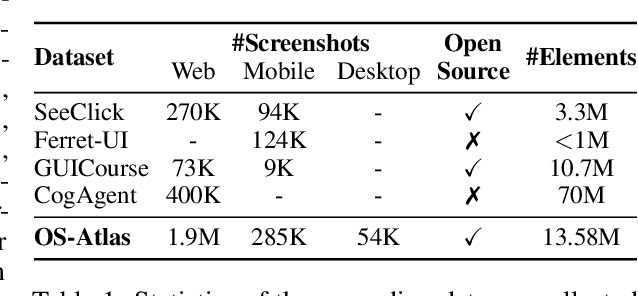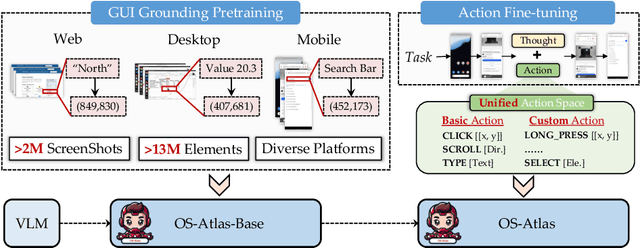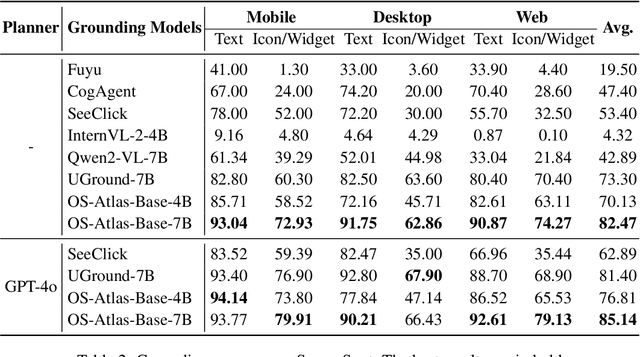Paul Pu Liang
May
Alice: Proactive Learning with Teacher's Demonstrations for Weak-to-Strong Generalization
Apr 09, 2025Abstract:The growing capabilities of large language models (LLMs) present a key challenge of maintaining effective human oversight. Weak-to-strong generalization (W2SG) offers a promising framework for supervising increasingly capable LLMs using weaker ones. Traditional W2SG methods rely on passive learning, where a weak teacher provides noisy demonstrations to train a strong student. This hinders students from employing their knowledge during training and reaching their full potential. In this work, we introduce Alice (pro{A}ctive {l}earning w{i}th tea{c}her's D{e}monstrations), a framework that leverages complementary knowledge between teacher and student to enhance the learning process.We probe the knowledge base of the teacher model by eliciting their uncertainty, and then use these insights together with teachers' responses as demonstrations to guide student models in self-generating improved responses for supervision. In addition, for situations with significant capability gaps between teacher and student models, we introduce cascade Alice, which employs a hierarchical training approach where weak teachers initially supervise intermediate models, who then guide stronger models in sequence. Experimental results demonstrate that our method significantly enhances the W2SG performance, yielding substantial improvements in three key tasks compared to the original W2SG: knowledge-based reasoning (+4.0%), mathematical reasoning (+22.62%), and logical reasoning (+12.11%). This highlights the effectiveness of our new W2SG paradigm that enables more robust knowledge transfer and supervision outcome.
Can A Society of Generative Agents Simulate Human Behavior and Inform Public Health Policy? A Case Study on Vaccine Hesitancy
Mar 12, 2025Abstract:Can we simulate a sandbox society with generative agents to model human behavior, thereby reducing the over-reliance on real human trials for assessing public policies? In this work, we investigate the feasibility of simulating health-related decision-making, using vaccine hesitancy, defined as the delay in acceptance or refusal of vaccines despite the availability of vaccination services (MacDonald, 2015), as a case study. To this end, we introduce the VacSim framework with 100 generative agents powered by Large Language Models (LLMs). VacSim simulates vaccine policy outcomes with the following steps: 1) instantiate a population of agents with demographics based on census data; 2) connect the agents via a social network and model vaccine attitudes as a function of social dynamics and disease-related information; 3) design and evaluate various public health interventions aimed at mitigating vaccine hesitancy. To align with real-world results, we also introduce simulation warmup and attitude modulation to adjust agents' attitudes. We propose a series of evaluations to assess the reliability of various LLM simulations. Experiments indicate that models like Llama and Qwen can simulate aspects of human behavior but also highlight real-world alignment challenges, such as inconsistent responses with demographic profiles. This early exploration of LLM-driven simulations is not meant to serve as definitive policy guidance; instead, it serves as a call for action to examine social simulation for policy development.
Data Foundations for Large Scale Multimodal Clinical Foundation Models
Mar 09, 2025Abstract:Recent advances in clinical AI have enabled remarkable progress across many clinical domains. However, existing benchmarks and models are primarily limited to a small set of modalities and tasks, which hinders the development of large-scale multimodal methods that can make holistic assessments of patient health and well-being. To bridge this gap, we introduce Clinical Large-Scale Integrative Multimodal Benchmark (CLIMB), a comprehensive clinical benchmark unifying diverse clinical data across imaging, language, temporal, and graph modalities. CLIMB comprises 4.51 million patient samples totaling 19.01 terabytes distributed across 2D imaging, 3D video, time series, graphs, and multimodal data. Through extensive empirical evaluation, we demonstrate that multitask pretraining significantly improves performance on understudied domains, achieving up to 29% improvement in ultrasound and 23% in ECG analysis over single-task learning. Pretraining on CLIMB also effectively improves models' generalization capability to new tasks, and strong unimodal encoder performance translates well to multimodal performance when paired with task-appropriate fusion strategies. Our findings provide a foundation for new architecture designs and pretraining strategies to advance clinical AI research. Code is released at https://github.com/DDVD233/climb.
Language Models' Factuality Depends on the Language of Inquiry
Feb 25, 2025Abstract:Multilingual language models (LMs) are expected to recall factual knowledge consistently across languages, yet they often fail to transfer knowledge between languages even when they possess the correct information in one of the languages. For example, we find that an LM may correctly identify Rashed Al Shashai as being from Saudi Arabia when asked in Arabic, but consistently fails to do so when asked in English or Swahili. To systematically investigate this limitation, we introduce a benchmark of 10,000 country-related facts across 13 languages and propose three novel metrics: Factual Recall Score, Knowledge Transferability Score, and Cross-Lingual Factual Knowledge Transferability Score-to quantify factual recall and knowledge transferability in LMs across different languages. Our results reveal fundamental weaknesses in today's state-of-the-art LMs, particularly in cross-lingual generalization where models fail to transfer knowledge effectively across different languages, leading to inconsistent performance sensitive to the language used. Our findings emphasize the need for LMs to recognize language-specific factual reliability and leverage the most trustworthy information across languages. We release our benchmark and evaluation framework to drive future research in multilingual knowledge transfer.
MimeQA: Towards Socially-Intelligent Nonverbal Foundation Models
Feb 23, 2025Abstract:Socially intelligent AI that can understand and interact seamlessly with humans in daily lives is increasingly important as AI becomes more closely integrated with peoples' daily activities. However, current works in artificial social reasoning all rely on language-only, or language-dominant approaches to benchmark and training models, resulting in systems that are improving in verbal communication but struggle with nonverbal social understanding. To address this limitation, we tap into a novel source of data rich in nonverbal and social interactions -- mime videos. Mimes refer to the art of expression through gesture and movement without spoken words, which presents unique challenges and opportunities in interpreting non-verbal social communication. We contribute a new dataset called MimeQA, obtained by sourcing 221 videos from YouTube, through rigorous annotation and verification, resulting in a benchmark with 101 videos and 806 question-answer pairs. Using MimeQA, we evaluate state-of-the-art video large language models (vLLMs) and find that their overall accuracy ranges from 15-30%. Our analysis reveals that vLLMs often fail to ground imagined objects and over-rely on the text prompt while ignoring subtle nonverbal interactions. Our data resources are released at https://github.com/MIT-MI/MimeQA to inspire future work in foundation models that embody true social intelligence capable of interpreting non-verbal human interactions.
Understanding the Emergence of Multimodal Representation Alignment
Feb 22, 2025Abstract:Multimodal representation learning is fundamentally about transforming incomparable modalities into comparable representations. While prior research primarily focused on explicitly aligning these representations through targeted learning objectives and model architectures, a recent line of work has found that independently trained unimodal models of increasing scale and performance can become implicitly aligned with each other. These findings raise fundamental questions regarding the emergence of aligned representations in multimodal learning. Specifically: (1) when and why does alignment emerge implicitly? and (2) is alignment a reliable indicator of performance? Through a comprehensive empirical investigation, we demonstrate that both the emergence of alignment and its relationship with task performance depend on several critical data characteristics. These include, but are not necessarily limited to, the degree of similarity between the modalities and the balance between redundant and unique information they provide for the task. Our findings suggest that alignment may not be universally beneficial; rather, its impact on performance varies depending on the dataset and task. These insights can help practitioners determine whether increasing alignment between modalities is advantageous or, in some cases, detrimental to achieving optimal performance. Code is released at https://github.com/MeganTj/multimodal_alignment.
Social Genome: Grounded Social Reasoning Abilities of Multimodal Models
Feb 21, 2025Abstract:Social reasoning abilities are crucial for AI systems to effectively interpret and respond to multimodal human communication and interaction within social contexts. We introduce Social Genome, the first benchmark for fine-grained, grounded social reasoning abilities of multimodal models. Social Genome contains 272 videos of interactions and 1,486 human-annotated reasoning traces related to inferences about these interactions. These traces contain 5,777 reasoning steps that reference evidence from visual cues, verbal cues, vocal cues, and external knowledge (contextual knowledge external to videos). Social Genome is also the first modeling challenge to study external knowledge in social reasoning. Social Genome computes metrics to holistically evaluate semantic and structural qualities of model-generated social reasoning traces. We demonstrate the utility of Social Genome through experiments with state-of-the-art models, identifying performance gaps and opportunities for future research to improve the grounded social reasoning abilities of multimodal models.
VLM$^2$-Bench: A Closer Look at How Well VLMs Implicitly Link Explicit Matching Visual Cues
Feb 17, 2025Abstract:Visually linking matching cues is a crucial ability in daily life, such as identifying the same person in multiple photos based on their cues, even without knowing who they are. Despite the extensive knowledge that vision-language models (VLMs) possess, it remains largely unexplored whether they are capable of performing this fundamental task. To address this, we introduce VLM$^2$-Bench, a benchmark designed to assess whether VLMs can Visually Link Matching cues, with 9 subtasks and over 3,000 test cases. Comprehensive evaluation across eight open-source VLMs and GPT-4o, along with further analysis of various language-side and vision-side prompting methods, leads to a total of eight key findings. We identify critical challenges in models' ability to link visual cues, highlighting a significant performance gap where even GPT-4o lags 34.80% behind humans. Based on these insights, we advocate for (i) enhancing core visual capabilities to improve adaptability and reduce reliance on prior knowledge, (ii) establishing clearer principles for integrating language-based reasoning in vision-centric tasks to prevent unnecessary biases, and (iii) shifting vision-text training paradigms toward fostering models' ability to independently structure and infer relationships among visual cues.
Group-Adaptive Threshold Optimization for Robust AI-Generated Text Detection
Feb 10, 2025Abstract:The advancement of large language models (LLMs) has made it difficult to differentiate human-written text from AI-generated text. Several AI-text detectors have been developed in response, which typically utilize a fixed global threshold (e.g., {\theta} = 0.5) to classify machine-generated text. However, we find that one universal threshold can fail to account for subgroup-specific distributional variations. For example, when using a fixed threshold, detectors make more false positive errors on shorter human-written text than longer, and more positive classifications on neurotic writing styles than open among long text. These discrepancies can lead to misclassification that disproportionately affects certain groups. We address this critical limitation by introducing FairOPT, an algorithm for group-specific threshold optimization in AI-generated content classifiers. Our approach partitions data into subgroups based on attributes (e.g., text length and writing style) and learns decision thresholds for each group, which enables careful balancing of performance and fairness metrics within each subgroup. In experiments with four AI text classifiers on three datasets, FairOPT enhances overall F1 score and decreases balanced error rate (BER) discrepancy across subgroups. Our framework paves the way for more robust and fair classification criteria in AI-generated output detection.
OS-ATLAS: A Foundation Action Model for Generalist GUI Agents
Oct 30, 2024



Abstract:Existing efforts in building GUI agents heavily rely on the availability of robust commercial Vision-Language Models (VLMs) such as GPT-4o and GeminiProVision. Practitioners are often reluctant to use open-source VLMs due to their significant performance lag compared to their closed-source counterparts, particularly in GUI grounding and Out-Of-Distribution (OOD) scenarios. To facilitate future research in this area, we developed OS-Atlas - a foundational GUI action model that excels at GUI grounding and OOD agentic tasks through innovations in both data and modeling. We have invested significant engineering effort in developing an open-source toolkit for synthesizing GUI grounding data across multiple platforms, including Windows, Linux, MacOS, Android, and the web. Leveraging this toolkit, we are releasing the largest open-source cross-platform GUI grounding corpus to date, which contains over 13 million GUI elements. This dataset, combined with innovations in model training, provides a solid foundation for OS-Atlas to understand GUI screenshots and generalize to unseen interfaces. Through extensive evaluation across six benchmarks spanning three different platforms (mobile, desktop, and web), OS-Atlas demonstrates significant performance improvements over previous state-of-the-art models. Our evaluation also uncovers valuable insights into continuously improving and scaling the agentic capabilities of open-source VLMs.
 Add to Chrome
Add to Chrome Add to Firefox
Add to Firefox Add to Edge
Add to Edge